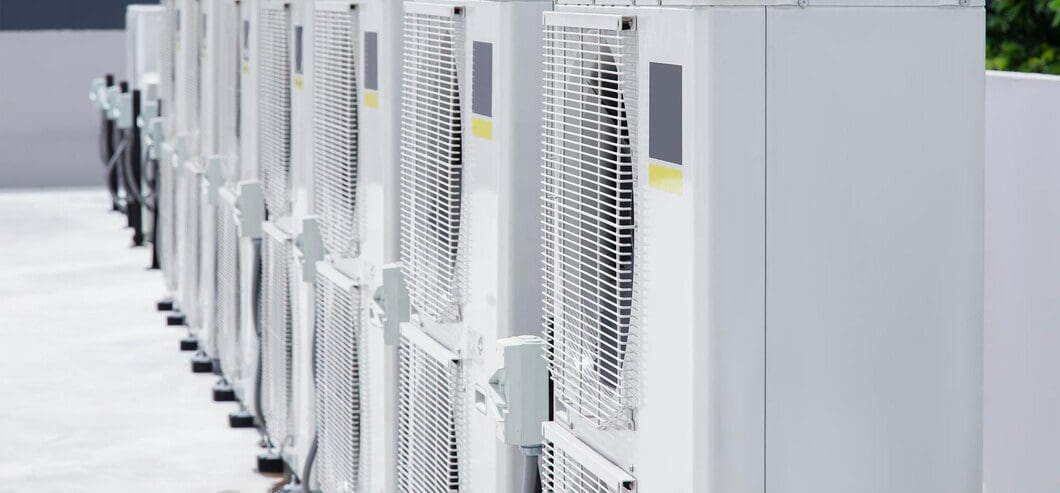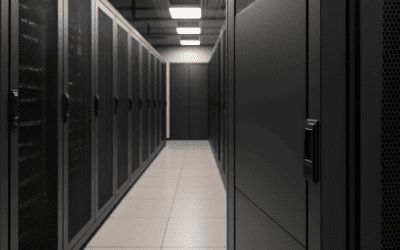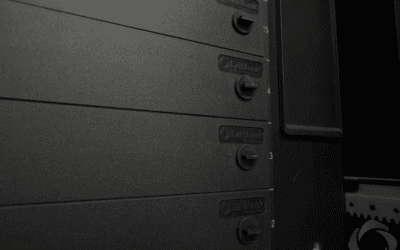The 411 on CRAC Units
Energy is a huge part of a company’s expenditure, and this reality is especially true for companies that use a data center. Finding the most efficient data center cooling systems is, therefore, a top priority for stakeholders.
Not only will a high-quality computer room air conditioning system save you a fortune on energy bills, but it will also protect your valuable computer room equipment far more effectively than traditional HVAC units for computer rooms.
Discover everything you need to know about CRAC units with our handy guide.
In the article:
[—ATOC—]
[—TAG:h2—]
What Is a CRAC Unit?
CRAC (computer room air conditioning) units cool data centers by removing excess heat from the environment and providing cool air in its place. The power used by data centers is huge, and with that power comes immense heat generation. Equipment that constantly overheats will wear out eventually.
The hot and cold configurations for data centers are extremely delicate, which is why high-performing computer room air conditioners are so essential. A server room may contain millions of dollars worth of expensive equipment. Keeping this equipment in the ideal cool state is what CRAC units do with far greater energy efficiency than traditional HVAC units.
How Does a CRAC Unit Work?
There are different types of CRAC units with some differences in how they operate (see below). Many units use a direct expansion system (DX) for cooling, which means that a refrigerant cools hot air from the data center.
The refrigerant expands as it heats up, eventually turning into a gas. It then goes to a compressor that expels the heat that has been absorbed by the refrigerant and allows the refrigerant to return to liquid form. This process is known as evaporative cooling. The cooled, compressed refrigerant makes its way back into the building, where it assists with cooling again.
Direct expansion is a popular choice for cooling units because it has lower power consumption and higher cooling capacity than conventional HVAC units.

Is a CRAC Unit a Split System? Types of CRAC Units
Below we cover some of the main types of CRAC units used for computer room air handling.
Split/Air-Cooled DX
“Split” means that in addition to the CRAC unit, the model also utilizes a condenser. The condenser is typically located outside the building, where cold air acts as a chiller for the refrigerant. Warm air is drawn from a “hot aisle” inside the building, which is a design mechanism that allows hot air distribution to flow directly to the chiller.
Condensers or compressors built into these models often require less power than other units as they utilize cool air for free cooling. This also helps to control humidity levels while lowering the temperature of the computer room. These models tend to perform well in low-density data centers.
One drawback is that the compressor must be installed outside the building. This can be an issue for computer rooms on higher levels.
Self-Contained Air-Cooled
This type of CRAC unit is located inside the building. This makes installation easier for centers on higher levels. Like a split unit, it uses a refrigerant to release cold. However, rather than locating the cooling coil or compressor outside the building, it relies on steady airflow from the hot aisle through ducts to expel heat and regulate the room’s temperature.
The air intakes of this type of unit allow for free cooling of the refrigerant, which is cost-effective. For lower-intensity computer room air conditioning, CRAC units of this kind are ideal — much like the split DX model.
Glycol-Cooled
CRAC units that are cooled by a glycol mixture (part ethylene glycol, part water) use a constant volume of this fluid to expel excess warmth and release cool air into the server environment. This mixture collects hot air, which is then transported to a cooling tank using a pump.
Rather than a condenser acting as a cooling coil, glycol HVAC models use a heat exchanger. Their fans blow cool outside air through the coil, which disperses the heat and allows the glycol mixture to go back inside to assist with cooling once more.
These models are ideal for computer rooms with higher requirements, especially since extraction pipes can travel further than air-cooled systems.
Water-Cooled
This type of HVAC unit operates similarly to the glycol model, except it only uses water. The water is a conductor through which overheated air is transferred outside, only, in this case, it uses a water tower to provide cooling.
It uses evaporative cooling to expel hot air and is another model that benefits data centers with higher usage requirements.
Why Does a Data Center Need Cold Air?
A data center is a delicate ecosystem that needs perfect balance for every part to run efficiently. The hardware produces massive volumes of hot air, but if the hot air doesn’t have an adequate outlet, the equipment will fail.
Like the highest-quality CRAC units, the room needs to promote airflow in the right direction and avoid hotspots. A data center owner can accomplish this feat by designing a hot aisle or simply using the right kind of floor tiles.
Perforated tiles on raised floors form an essential part of a server room’s cooling requirements as well as a high-performance CRAC unit. Raised floor tiles allow for more consistent airflow variations in the computer room, creating a balanced temperature — this means that the unit doesn’t have to increase its fan speed (where a fan is used) and provides energy savings as a result.
What Are the Best Computer Room Air Conditioning Units?
Depending on a server center’s size and design, each type of CRAC unit comes with unique advantages. Some systems are better at reducing humidity than others — humidity can also be ruinous to equipment. If this is a concern in your location, enquire about the dehumidifying capacity of any model before you have it installed.
Likewise, fluid and air-cooled systems each have advantages depending on the size of your operation. It’s best to know your requirements before you begin your search to find the best CRAC unit.

Image credit – Rittal
What Are CRAC and CRAH?
A CRAH unit (computer room air handling) is a slightly different HVAC solution because it uses a chilled water coil to regulate temperature. In an external chilled water plant, the air circulates over a cooling coil full of chilled water. This chilled water then provides cold air to the building.
You can often find CRAH units in buildings like skyscrapers. CRAH units tend to be less effective for high-intensity computer rooms, as the chilled water system that CRAH units use may not cope with the power draw and heat emission of heavy-use server areas.
CRAH units are great systems for areas that produce less heat. However, CRAC tends to be a better system than CRAH units for high-power operations.
How Much Is a CRAC Unit?
Pricing depends hugely on the size and complexity of the system you need. Newer models offer solutions like a control valve which allows you to set static pressure, which helps to mitigate issues like static discharges and thermal over-runs.
It’s worth factoring in the amount of money you’ll save on power bills with a more energy efficient data center cooling system in place when you consider the cost of these systems. We spend a terrific amount on energy, so it’s worth making sure your money works for you in HVAC expenditure.
Precision Air Conditioning for Computer Room Cooling
Finding a solution that suits your needs is easier when you’re well-informed. Find out more about the best practices for data center cooling or head to our products to find the perfect cooling solutions for your data center.




